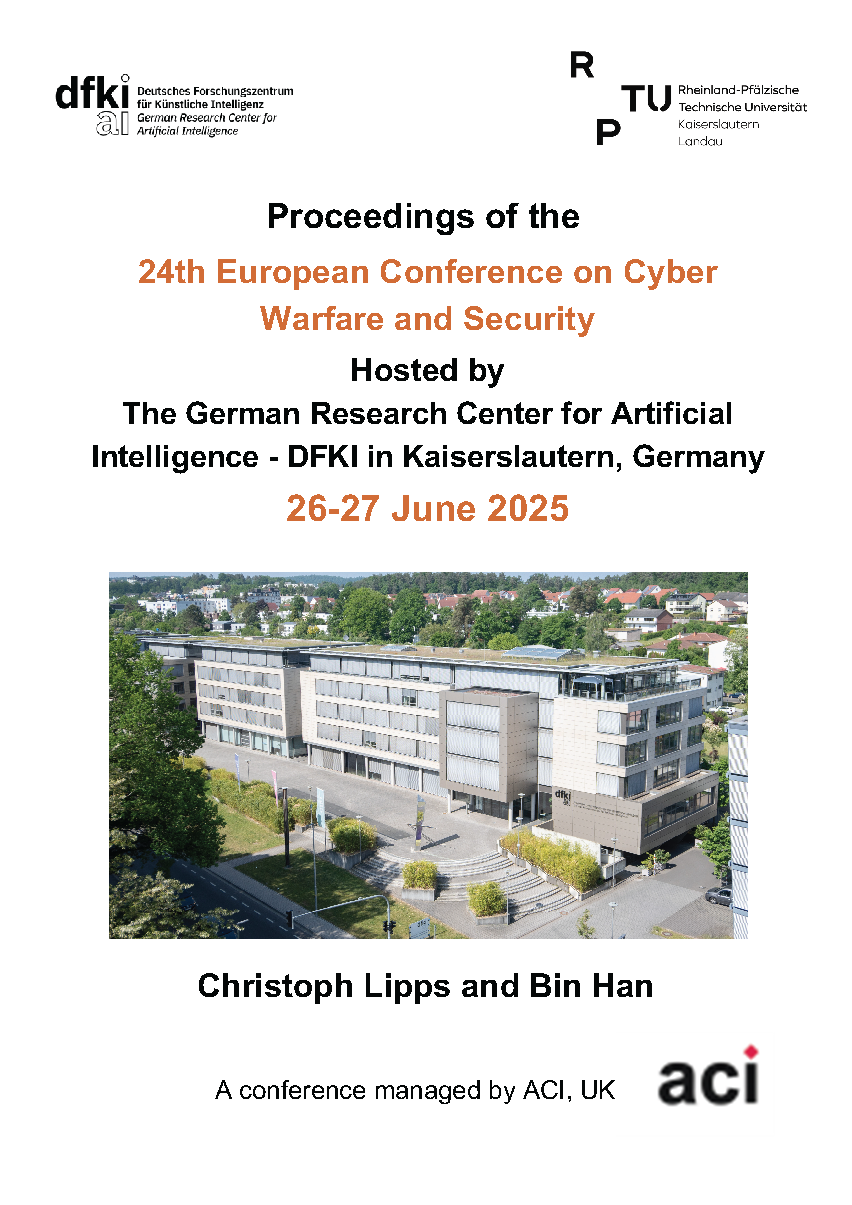Security Comparison of Powerline Communication and Wi-Fi Technologies for Internet of Things
DOI:
https://doi.org/10.34190/eccws.24.1.3615Keywords:
Internet of Things, Powerline Communications, WiFi, Physical Layer SecurityAbstract
With the rise of system automation, more devices require intelligence and communication capabilities with a network, which is commonly provided via Internet of Things (IoT) devices. Providing communication stack security for these networks becomes increasingly challenging as the expectations of the systems increase. This paper reviews the current status of physical security network technology and explores innovations made in the past five years to identify and solve cyber vulnerabilities in a variety of contexts and then relates them back to IoT applications. These networked devices are often produced as simply and cheaply as technically feasible, which results in them lacking computational capacity, robust networking hardware and inherent security measures. The review focuses on two main technologies, WiFi and Powerline communications (PLC), to compare research on guided and un-guided media. These technologies can both be considered shared, as it is typical for multiple users to be expected to utilize a shared channel. This means both mediums are vulnerable to wireless jamming, but the effectiveness of this varies greatly based on factors such as the environment, cable shielding and transceiver distance. Similarly, the propagation of signals from the two technologies jeopardizes the potential privacy of communications by leaving them vulnerable to various means of eavesdropping. This can be addressed by using methods such as encryption, which is usually implemented at higher layers of the communication stack to provide confidentiality but can also be applied at the physical layer. Encryption also has the challenge of ensuring key exchange occurs securely which requires unique solutions when the limits of IoT devices are considered. Eavesdropping can also be defeated by controlling the signal-to-noise ratio that is presented to unintended receivers. Additionally, methods of device fingerprinting are being developed to create more robust authentication regimes between devices. Several research opportunities have been proposed where new concepts in one medium are applied to the other.
Downloads
Published
Issue
Section
License
Copyright (c) 2025 European Conference on Cyber Warfare and Security

This work is licensed under a Creative Commons Attribution-NonCommercial-NoDerivatives 4.0 International License.





